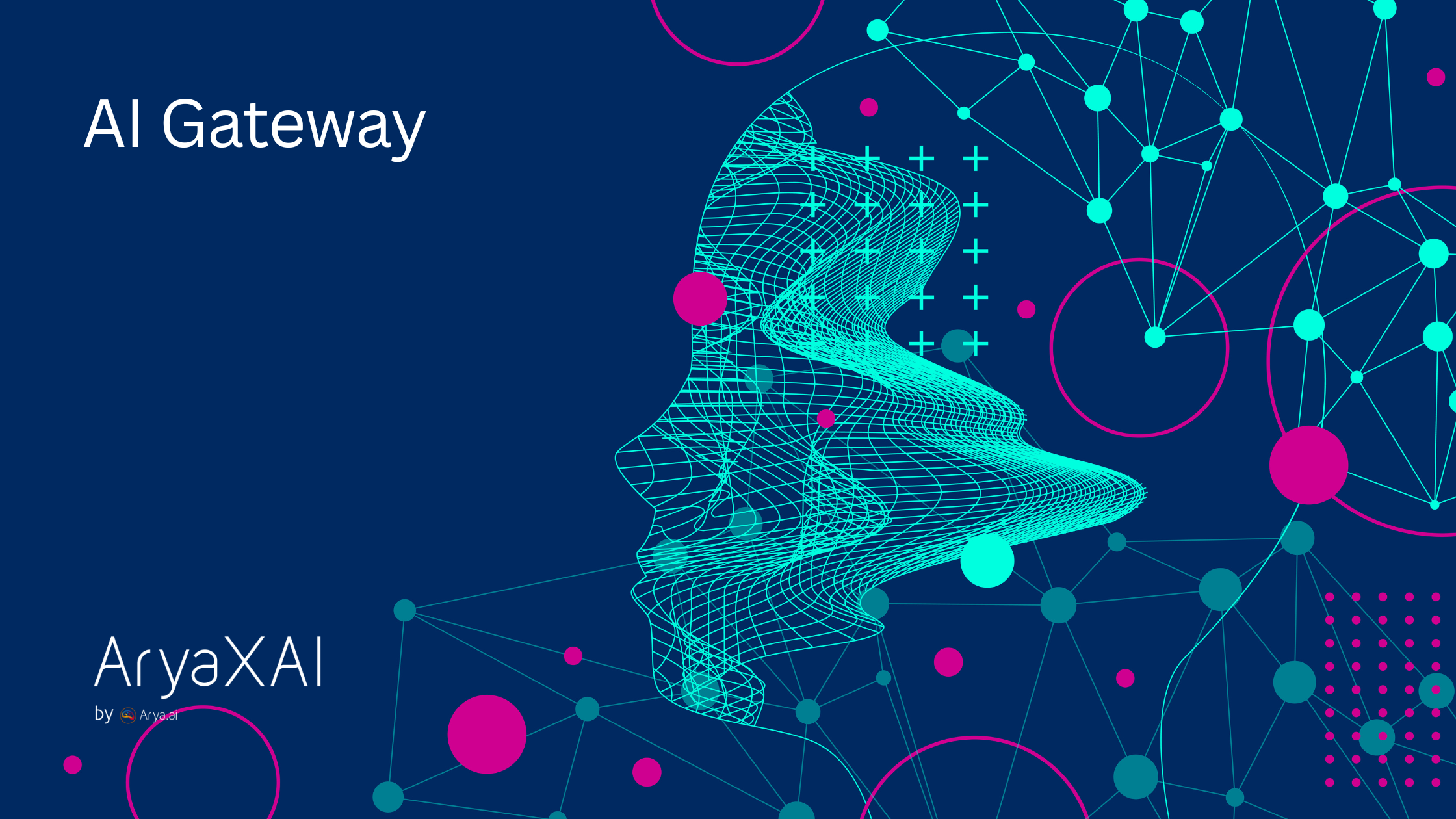Decoding the Black Box: Top AI Interpretability Research Papers from September’25
October 3, 2025

Interpretability is no longer a nice‑to‑have for artificial intelligence - it’s a core requirement for deploying AI safely and responsibly. As models become larger and more capable, it’s essential that engineers and stakeholders can understand why the model reached a particular conclusion. September 2025 saw a flurry of work pushing the field of AI interpretability forward. Below we recap ten of the most notable research papers published in September 2025, highlighting the problems they tackle, the methods they introduce, and why they matter for practitioners.
Top Research Papers Covered
1. Binary Autoencoder for Mechanistic Interpretability of Large Language Models
2. Aligning AI Through Internal Understanding: The Role of Interpretability
3. Toward a Theory of Generalizability in LLM Mechanistic Interpretability Research
4. LLM Interpretability with Identifiable Temporal‑Instantaneous Representation
5. EVO‑LRP: Evolutionary Optimization of LRP for Interpretable Model Explanations
6. TDHook: A Lightweight Framework for Interpretability
8. Prototype‑Driven Interpretability for Code Generation in LLMs (ProtoCode)
10. Beyond Formula Complexity: Effective Information Criterion for Symbolic Regression
Below, you’ll find detailed summaries and insights for each of these papers. For broader context on AI research, be sure to explore our other AryaXAI reports on AI engineering, agentic AI and AI observability. You can also find more articles in our research hub and try the AryaXAI demo at aryaxai.com to experience interpretability tools firsthand.
1. Binary Autoencoder for Mechanistic Interpretability of LLMs
Understanding how large language models (LLMs) represent concepts often involves sparse autoencoders. However, existing methods rely on implicit regularization and can produce dense or dead features that are hard to interpret. Hakaze Cho et al. propose a binary autoencoder (BAE) that minimizes the entropy of hidden activations across minibatches, encouraging feature independence and global sparsity. By discretizing activations to 1‑bit and using gradient estimation, the model extracts atomized features and provides accurate feature set entropy estimates. Experimental results show that BAE produces more interpretable features than standard sparse autoencoders and can characterize in‑context learning dynamics. The method offers a principled step toward mechanistic interpretability in LLMs.
BAE addresses a persistent problem in circuit discovery - how to ensure features are truly disentangled and not just artifacts of regularization. Its information‑theoretic formulation may inspire future work on combining sparsity with other constraints such as causality or modularity.
2. Aligning AI Through Internal Understanding: The Role of Interpretability
In this position paper, Aadit Sengupta et al. argue that interpretability should be treated as a design principle for AI alignment rather than a diagnostic afterthought. They emphasize that mechanistic techniques like circuit tracing and activation patching offer causal insights that behavioral methods such as RLHF or red teaming cannot. Despite their promise, interpretability tools face challenges - scalability, epistemic uncertainty, and mismatches between learned representations and human concepts. The authors call for integrating interpretability into model design, scaling infrastructure, and raising methodological standards. They caution that without internal transparency, alignment efforts risk becoming “surface‑level fixes” that hide deeper problems.
While not presenting new algorithms, this paper frames interpretability as essential for trustworthy AI. It highlights the need for interdisciplinary collaboration—drawing from formal verification, philosophy of science and social science—to define what a “good explanation” means.
3. Toward a Theory of Generalizability in LLM Mechanistic Interpretability
Mechanistic insights discovered in one model often fail to translate to others, leaving researchers uncertain about the universality of their findings. Sean Trott tackles this epistemological challenge by proposing five axes of correspondence - functional, developmental, positional, relational and configurational, to describe when mechanistic claims might generalize. He validates the framework by studying 1‑back attention heads across random seeds of the Pythia suite; developmental trajectories are consistent across models, whereas positional consistency is limited. The paper concludes that mapping model design properties to emergent behaviors is key to building a theory of generalizability.
This work encourages mechanistic researchers to move beyond anecdotal circuit discoveries toward systematic, comparative studies. The proposed axes could serve as a checklist when evaluating whether a discovered circuit is likely to appear in other architectures.
4. LLM Interpretability with Identifiable Temporal‑Instantaneous Representation
Most mechanistic methods ignore temporal dependencies within transformer activations. Xiangchen Song et al. introduce a temporal causal representation learning framework that models both time‑delayed and instantaneous relations among latent concepts. The framework extends sparse autoencoder techniques with causal discovery to produce interpretable features and provides theoretical guarantees for identifiability. On synthetic datasets scaled to match real‑world complexity, the method uncovers meaningful concept relationships. By capturing temporal dependencies, the approach broadens the scope of mechanistic interpretability beyond static feature extraction.
Incorporating temporal causality opens up new ways to study memory and recurrence in transformers. It could help explain long‑range dependencies and time‑delayed interactions that simple feature extractors miss.
5. EVO‑LRP: Evolutionary Optimization of LRP for Interpretable Explanations
Layer‑wise relevance propagation (LRP) is a popular technique for visualizing which pixels influence a neural network’s output. Standard LRP relies on heuristic rule sets, which may not align with the model’s behavior. Emerald Zhang et al. apply a Covariance Matrix Adaptation Evolution Strategy (CMA‑ES) to tune LRP hyperparameters based on quantitative interpretability metrics like faithfulness and sparsity. The optimized settings produce attribution maps with better coherence and class‑specific sensitivity, outperforming traditional explainability methods. The work demonstrates that explainability can be systematically improved using search strategies rather than heuristics.
Evo‑LRP exemplifies how optimization can bridge the gap between algorithmic interpretability and human perception. It also underscores the importance of using objective metrics when evaluating explanation quality.
6. TDHook: A Lightweight Framework for Interpretability
Interpretability pipelines often require stitching together attribution, probing and intervention methods, but existing frameworks can be heavy or limited to specific architectures. Yoann Poupart presents TDHook, a lightweight library built on the tensordict data structure. TDHook is compatible with any PyTorch model and supports complex multi‑modal or multi‑output pipelines. Benchmarks show that the library reduces disk space requirements by half compared with transformer_lens and can achieve up to a 2× speed‑up over Captum for integrated gradients. TDHook includes ready‑to‑use methods for concept attribution, attribution patching and probing, along with a flexible get‑set API for interventions.
By lowering the barrier to composing interpretability techniques, TDHook will likely accelerate adoption of advanced interpretability workflows in production settings. Its support for tensordict simplifies handling of intermediate activations and gradients across complex models.
7. Mechanistic Interpretability of LoRA‑adapted Whisper for Speech Emotion Recognition
Although Low‑Rank Adaptation (LoRA) has become a popular fine‑tuning technique, its effect on model internals remains under‑explored. Yujian Ma et al. conduct the first mechanistic analysis of LoRA‑adapted Whisper models for speech emotion recognition. Using layer contribution probing, logit‑lens inspection and representational similarity metrics, they discover a delayed specialization process: early layers preserve general speech features, while deeper layers consolidate task‑specific information. The study also identifies a forward‑alignment and backward‑differentiation dynamic between LoRA matrices. These insights can inform more efficient and interpretable adaptation strategies for speech models.LoRA’s mechanistic properties have implications beyond speech; understanding how low‑rank updates affect representation hierarchies could guide adaptation across modalities.
8. Prototype‑Driven Interpretability for Code Generation (ProtoCode)
Code‑generation models are widely used, but debugging their reasoning processes is challenging. Liu et al. propose ProtoCode, which automatically samples in‑context learning (ICL) demonstrations to provide prototype‑driven explanations for model outputs. An AST‑based analysis identifies which parts of the generated code are influenced by each demonstration, improving both pass@10 performance and interpretability. The authors find that high‑quality demonstrations boost model performance, whereas poor demonstrations can degrade it, emphasizing the importance of careful example selection.
ProtoCode links interpretability and performance: by understanding which examples influence code generation, engineers can curate training prompts more effectively and debug erroneous code paths.
9. Structural Reward Models for Fine‑Grained Preference Alignment
Reinforcement learning from human feedback (RLHF) often relies on scalar reward models that compress complex preferences into single numbers. Zhang et al. introduce Structural Reward Models (SRM), which add side‑branch models to capture different quality dimensions. These structural branches improve interpretability by providing multi‑dimensional reward signals and can be optimized separately for efficiency and scalability. Experiments show that SRMs are more robust to distribution shifts and align better with human preferences than scalar or generative reward models.
SRMs represent an important step toward interpretable reinforcement learning. By exposing the underlying dimensions of preference, they offer richer feedback for model training and open the door to more transparent alignment protocols.
10. Effective Information Criterion for Symbolic Regression
Symbolic regression aims to discover interpretable formulas that describe data. Traditional methods use formula length as a proxy for simplicity, ignoring mathematical structure. Zihan Yu et al. propose the Effective Information Criterion (EIC), treating formulas as information‑processing systems and penalizing loss of significant digits or amplification of rounding noise. Combining EIC with search‑ and generative‑based symbolic regression algorithms improves performance on the Pareto frontier and reduces structural irrationality. In a survey with 108 experts, the EIC agrees with human preferences on formula interpretability 70% of the time.
By quantifying how errors propagate through a formula’s internal structure, EIC provides a more principled measure of interpretability. It could influence automated scientific discovery, where understanding the structure of learned equations is as important as predictive accuracy.
Browse our AryaXAI articles for deeper dives into AI agents, engineering, observability and other topics. To see interpretability in action, check out the demos at aryaxai.com.
SHARE THIS
Discover More Articles
Explore a curated collection of in-depth articles covering the latest advancements, insights, and trends in AI, MLOps, governance, and more. Stay informed with expert analyses, thought leadership, and actionable knowledge to drive innovation in your field.

Is Explainability critical for your AI solutions?
Schedule a demo with our team to understand how AryaXAI can make your mission-critical 'AI' acceptable and aligned with all your stakeholders.



.png)



















